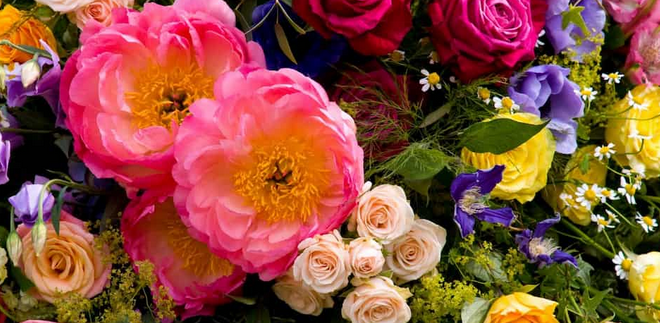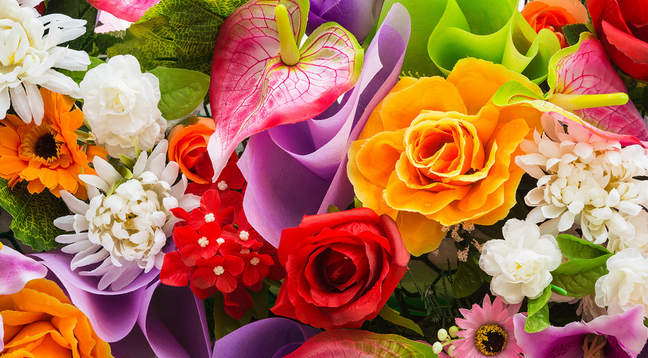|
Getting your Trinity Audio player ready...
|
Flowers are more than just nature’s beautiful creations; they play a significant role in various cultures and traditions worldwide. These delicate blossoms transcend borders, languages, and time, symbolizing emotions, spirituality, and life itself. In this article, we will explore the universal language of flowers and how different cultures and traditions incorporate them into their customs and rituals.

Flowers as Symbols of Love and Affection
Across cultures, flowers have been a timeless symbol of love and affection. Whether it’s the classic red rose in Western cultures or the delicate sakura (cherry blossom) in Japan, flowers convey feelings of love, passion, and devotion. In India, marigolds hold special significance in weddings, symbolizing purity, beauty, and the sun’s blessings.
Religious and Spiritual Significance
Many religions incorporate flowers into their rituals and ceremonies. In Hinduism, devotees offer flowers to deities as a gesture of devotion and gratitude. Similarly, Buddhism uses lotus flowers as a symbol of enlightenment, purity, and rebirth. In Christianity, lilies represent purity and renewal, often seen during Easter celebrations.
Healing and Medicinal Uses
Traditional Chinese medicine includes various flowers like chrysanthemums and honeysuckles to treat various ailments. In Native, The global interest in herbal medicine has brought renewed attention to the therapeutic potential of flowers.
Cultural Festivals and Celebrations
Around the world, flowers take centre stage in numerous festivals and celebrations. The Thai Songkran Festival, for instance, involves water fights with participants often garlanding each other with flowers. In Mexico, Dia de los Muertos (Day of the Dead) features elaborate floral altars to honour deceased loved ones. The Rose Parade in the United States showcases stunning flower floats, a tradition dating back to the late 19th century.
Funerals and Mourning
In times of sorrow and loss, flowers offer solace and support. In many cultures, funeral flowers, such as lilies, carnations, and chrysanthemums, symbolize sympathy and remembrance. They provide comfort to grieving families and serve as a tribute to the departed souls.
Cultural Variations in Flower Symbolism
While flowers often share universal meanings, there are cultural variations in their symbolism. For example:
- In Japan, cherry blossoms symbolize the ephemeral nature of life and the transient beauty of youth.
- In China, the peony represents wealth and prosperity.
- In Ireland, the shamrock is a symbol of good luck.
Flower Arrangements as Art Forms
These intricate arrangements go beyond aesthetics and convey deeper meanings. Ikebana emphasizes minimalism and balance, with each element carefully chosen to represent harmony with nature.
Weddings and Floral Customs
Weddings around the world feature a profusion of flowers. From bridal bouquets to venue decorations, flowers symbolize love and new beginnings. In Western weddings, the bouquet toss has become a cherished tradition symbolizing the bride’s good fortune.
Floral Superstitions
Superstitions surrounding flowers vary widely.
Modern Interpretations and Global Exchange
In today’s interconnected world, cultures and traditions often blend. The Internet and international travel have allowed people to discover and incorporate flowers from different cultures into their lives.
Environmental Significance
Flowers play a vital role in maintaining ecological balance. They provide nectar and pollen for pollinators like bees and butterflies, facilitating the reproduction of numerous plant species. This ecological function highlights the interconnectedness of all life on Earth.
Language of Flowers
Floriography, the language of flowers, is an intriguing aspect of floral culture. Each flower had a specific meaning, allowing people to communicate hidden emotions through bouquets and arrangements.
Economic Importance
This industry supports millions of livelihoods, from flower farmers to florists, and generates significant revenue worldwide.
Floral Art in Contemporary Culture
Flowers continue to inspire artists, designers, and creators in various fields. Floral motifs are prevalent in fashion, interior design, and graphic arts. Many contemporary artists use flowers as subjects in their works, blending tradition with modernity.
Sustainability and Ethical Sourcing
There’s a growing awareness of the environmental and ethical aspects of the flower industry. Sustainable and eco-friendly practices are gaining traction, with consumers seeking responsibly sourced, organic, and fair-trade flowers. This shift reflects broader concerns about ecological conservation and social responsibility.
Virtual Flower Experiences
In the digital age, virtual flower experiences have emerged. Virtual gardens and online flower markets enable people to explore and purchase flowers from around the world without leaving their homes. These platforms provide insights into the cultural significance of flowers globally.
Flowers in Literature and Poetry
Flowers have always been a muse for writers and poets. Countless works of literature and poetry use flowers as symbols, metaphors, and motifs to evoke emotions and convey deeper meanings. This literary connection highlights the enduring allure of flowers in human expression.
Conclusion
In conclusion, flowers are universal messengers of emotions, spirituality, and cultural significance. They connect people across the globe, transcending language and time. Understanding the role of flowers in different cultures and traditions allows us to appreciate the rich tapestry of human expression and the beauty of nature’s most exquisite creations.
You may find this information useful:
Reasons Why Flowers are Needed at Funerals
Reasons why it is important to have Flowers at a Wedding
What to Know When Choosing to Get Well Flowers for Patients
Floral Colour Combinations: Crafting Nature’s Palette

